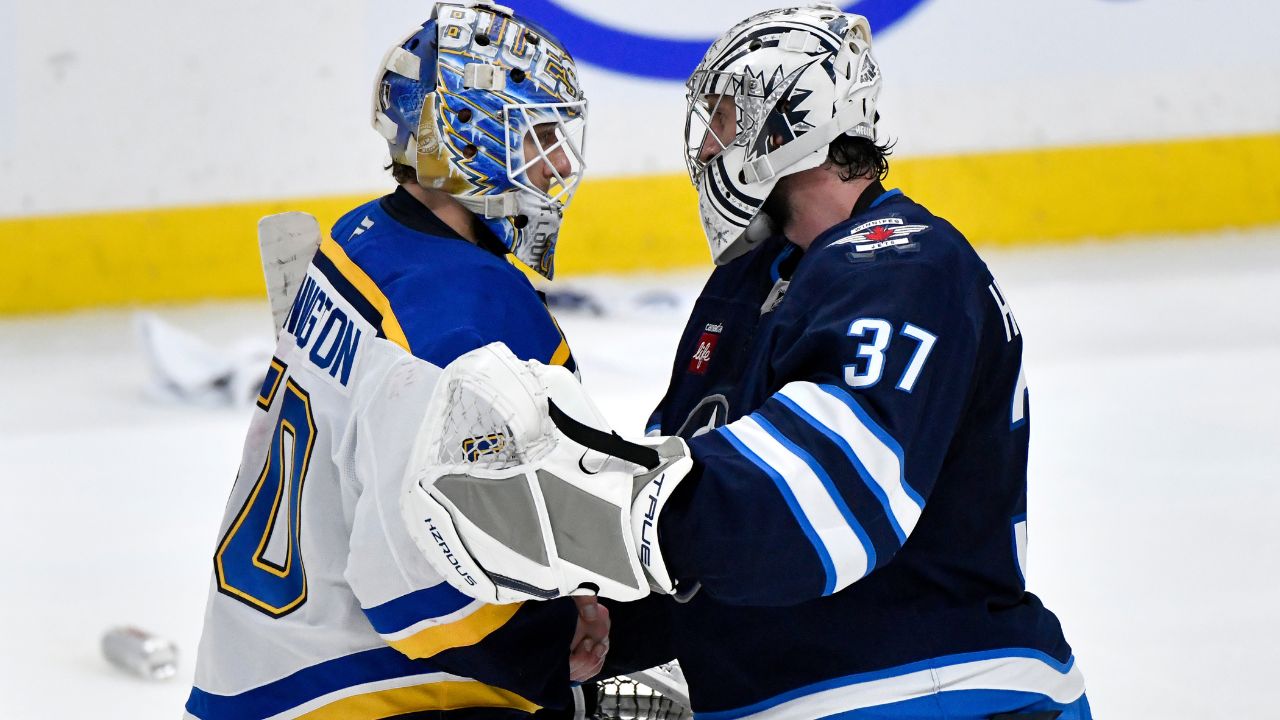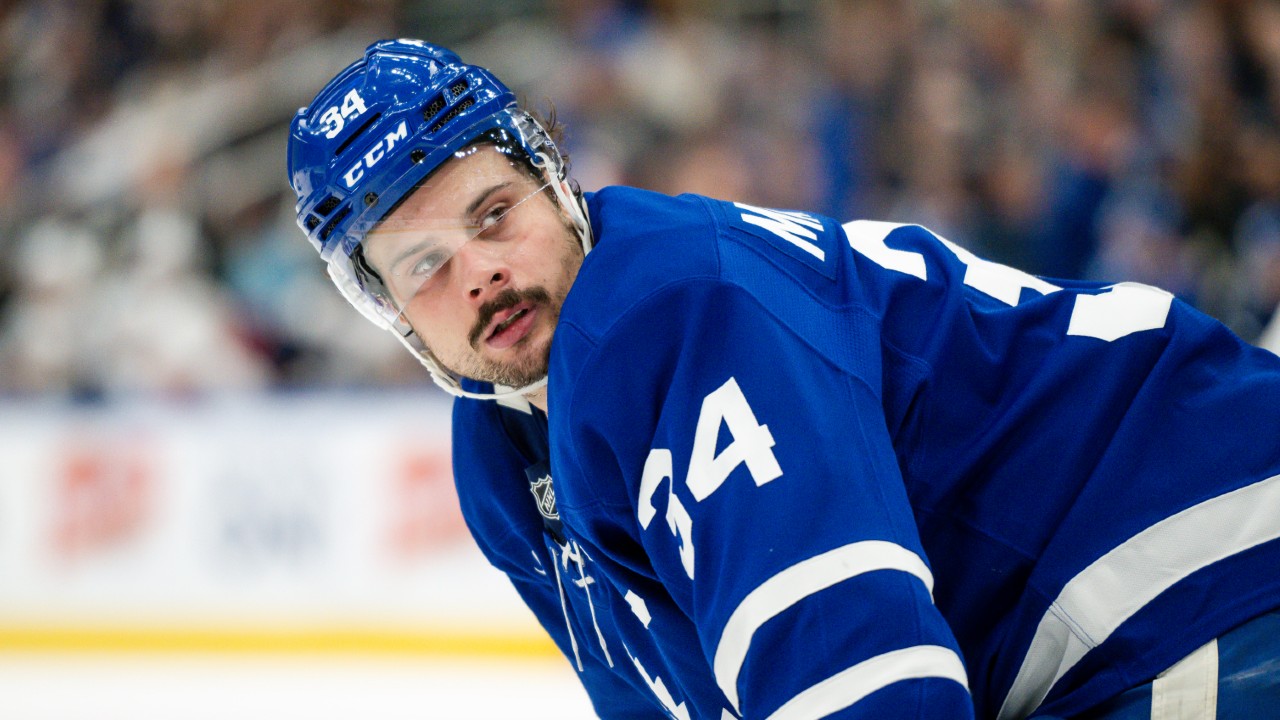
TORONTO — After a running two-seamer got away and clipped Michael Taylor on the elbow, loading the bases with two out in the sixth inning, Jose Berrios pounded his glove and shook his head with frustration. That heavy sinker can get away from him at times, breaking more than 16 inches in to a right-handed hitter. But giving up free bases like that isn’t part of the deal with Berrios, who entered Sunday’s outing having walked only 2.4 per nine and hit just eight batters all season, after hitting only three in 2020. Taylor was Berrios’s third hit batter of the day.
He was a little too amped up, perhaps. A little over-eager to impress. Maybe the nerves from a Toronto Blue Jays debut before 14,427 at Rogers Centre were causing Berrios — acquired in a trade deadline shocker Friday for two of the club’s top prospects — to fly open in his delivery. Whatever it was, Berrios wasn’t in that spot because he didn’t know how to handle it. You don’t pitch your way to multiple all-star seasons, get the nod in game 1 of a divisional series, and represent your country at the World Baseball Classic without learning how to overcome a little adversity in stressful situations. The Blue Jays paid such a high price for a reason.
And so, after a quick mound visit from his new pitching coach Pete Walker, Berrios rubbed up a fresh baseball while peering back at a runner on each base, took a deep breath, and got back to work. Five curveballs later, he was slapping his glove and pumping his fist as he glided off the mound, having induced three swinging strikes from Edward Olivares for his seventh strikeout of the day.
That was the toughest moment Berrios faced throughout an outstanding Blue Jays debut in which he threw six shutout innings, striking out those seven while walking only one, as the Blue Jays completed a series sweep of the Kansas City Royals with a 5-1 victory. Leaning heavily on his curveball, as he does, Berrios ran up 11 swinging strikes and earned called ones with all four of his pitches, showing Blue Jays fans just how good he can be even on days when he’s not quite at his best.
After stranding a pair of first-inning baserunners, Berrios flashed his athleticism in the second, dodging a shard of Taylor’s broken bat to field a comebacker on the mound before pivoting and firing a dart to Marcus Semien at second, starting a double play that erased a leadoff single. A batter later, Berrios notched his first strikeout as a Blue Jay, sitting down Nicky Lopez with a nasty, back-foot breaking ball.
Two more strikeouts came in the third, followed by another couple in the fourth as Berrios settled into a groove. The fifth was a breeze, but the sixth required some mettle after Berrios loaded the bases thanks to that elbow-clipper to Taylor. But his emphatic strikeout of Olivares was perhaps his most impressive of the day, as Berrios showed the Royals outfielder nothing but curveballs and still got three swinging strikes. In all, Berrios earned a strike with 64 of his 95 pitches, and allowed only three balls in play with exit velocities north of 93 mph.
Meanwhile, early run support came off the bats of George Springer, who doubled the game’s opening run home in the third, Marcus Semien, who crushed a two-run shot later that inning, and Santiago Espinal, who snuck a solo shot over the left field wall in the fourth. Espinal walked with the bases loaded in the fifth to cash another, continuing a quietly strong season in which he’s now hitting .312/.362/.428 with a 118 wRC+ in limited playing time.
But Sunday was all about Berrios, who completed six innings for a fifth consecutive outing, giving an immediate boost to his new club. Reliably pitching deep into ballgames is one of the biggest factors that drew the Blue Jays to Berrios, who ought to provide trickle-down impact to the club’s beleaguered bullpen by regularly taking three full trips through the opposition lineup and chewing through innings.
Top-10 in starts and innings pitched since he established himself as a big-leaguer in 2017, Berrios has paired durability with effectiveness — he has a 116 ERA+ over that span — to make himself one of the game’s most dependable starters. He’s thrown at least six innings in 13 of 20 starts this season, and has failed to complete five – only five – times since 2019, a span of 64 outings. The 10.8 WAR he’s posted over that span is a top-20 mark among MLB pitchers, as is his 87.5-m.p.h. average exit velocity allowed, an important number for a pitcher who doesn’t strike out batters at an elite clip.
And he appears to be getting better. His strikeout rate has progressively increased over the course of his career, reaching a high of 25.7 per cent this season, while his 2021 walk rate — 6.5 per cent — is just a shade off his career-low and ranks among MLB’s 75th percentile. Entering his prime at 27, Berrios is throwing both his four-seamer and sinker harder than he was in his age 24 and 25 seasons — the two years he was an all-star — while using them more confidently, throwing his four-seamer in the zone nearly 60 per cent of the time.
Of course, Berrios’s biggest weapon isn’t either of his heaters — it’s a big, sweeping curveball he’s used more than any other pitch over the last two seasons, generating a whiff more than 35 per cent of the time hitters offer at it. Berrios’ curveball breaks so much horizontally — 60 per cent more than a league average curve — that it often looks like a slider, or a slurve at best.
A lot of player development staffs might look at a pitch like that and try to inch it more towards a true 12-6 curveball or a proper slider. But Berrios has proven he can make his unconventional breaking ball work at the big-league level, using it as his primary offering this season and holding batters to a .263 wOBA against it.
He’ll sail it away from right-handed hitters for swing-and-miss and he’ll drive it at the back feet of lefties. Or He’ll backdoor it to those left-handers and drop it on the inner half to righties who think it might hit them. It’s a heavy duty weapon, and when he’s tunnelling off a sinker that runs in the opposite direction, a four-seamer with decent ride, and a sneaky changeup that left-handers have to respect, Berrios makes for an incredibly uncomfortable plate appearance.
And with his strong outing Sunday, he fit right in to a Blue Jays rotation that has been churning out strong starts over the last five days. Wednesday at Fenway Park, Robbie Ray grinded his way through a determined, one-run-over-six-innings outing, before Hyun Jin Ryu capped a long road trip with six shutout innings the next day. Friday, Ross Stripling gave his club exactly what it asks of a No. 5 starter, completing 5.1 innings while allowing only two runs. And then Saturday, in only his ninth big-league start, Alek Manoah demonstrated the frontline potential he could one day reach from what has thus far been a mid-rotation floor, spinning seven shutout innings.
Add Berrios into that mix and suddenly the Blue Jays have a formula to be competitive night in and night out, with a top-five offence that it hopes will offset any hiccups. Ray, Ryu and Berrios are a stellar top-three; Manoah’s relatively unproven but rich with upside; Stripling’s a solid five; and Thomas Hatch and Anthony Kay provide a decent layer of insurance at six and seven.
You can certainly do worse. And the Blue Jays will hope that starting rotation stability will help the club finally take the next step in a season mostly spent hovering just north of .500. With this weekend’s sweep of the Royals, the Blue Jays have now won four in a row, and six of seven, matching the season’s high-water mark at six games above .500 and pulling themselves out of a brief tailspin that hit during last week’s road trip through New York and Boston.
Of course, we’ve seen this from these Blue Jays before. The reason why the club has merely hung around in the AL wild card race rather than taking a lead in it is because strong stretches like these have reliably been followed by a string of tough results. Quality of competition is a factor, as well. The Blue Jays have reliably beaten up on ordinary clubs like the Royals, going 27-10 against teams below .500. The difficulty has been replicating that success against tougher tests, as the Blue Jays are 27-38 against clubs at .500 or above.
Ultimately, if this team is going to go on the run it needs over the next two months and make a postseason push, it will have to perform better against good teams. Will Berrios and an overhauled bullpen be enough to get the Blue Jays over that hump? With 51-50 Cleveland and 63-43 Boston passing through Rogers Centre for a pair of four-game sets this week, we’re about to get an indication.




